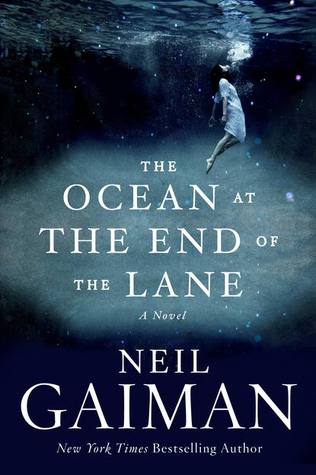For readers unfamiliar with Louise Penny's mystery series, this is #9 with Chief Inspector Armand Gamache. Although this is only my second foray into her Quebec crime series (my first being her last book, BEAUTIFUL MYSTERY), I was impressed with her ability to create multiple plots and weave them together. There's a fresh murder to solve in the town of Three Pines (where some of her series takes place), as well as an arc that started several books ago--the malfeasance of the Sûreté du Québec (police dept). additionally, Armand's close colleague and personal friend, Jean-Guy Beauvoir, is suffering from addiction problems.
HOW THE LIGHT GETS IN takes us back to Three Pines, where I met several quirky/eccentric people for the first time, but am well aware that they are repeating characters, (or sometimes just former ones). Penny does a solid job of bringing new readers into this small village and allowing us to meet the inhabitants naturally and unaffectedly. She doesn't broadcast their histories with awkward exposition, but rather lets pieces of their past unfold with the present events. That takes subtlety and finesse, something that Penny astutely possesses. The truculent poet, Ruth, for example, may be on the periphery of a scene periodically, and then take center stage. Penny juxtaposes scenes and events that progress the various plots and develop the characters with riveting tension.
The murder of septuagenarian, Constance Pineault, who had just recently visited Three Pines bookstore owner, Myrna, brings Gamache back to investigate. This is right before the Christmas holidays, where the deep snow and cold air tends to create gatherings at the warm village bistro. At the same time, Gamache is struggling to keep his decimated homicide department together. He has been undermined by Superintendent Sylvain Françoeur, who has effectively fouled Gamache's reputation and is honing in for the final blow. Armand's relationship with Jean-Guy has also been maimed, thanks to Françoeur and Jean-Guy's torment with his own personal demons.
Penny also devotes ample space to suspenseful cyber hacking, and does it nimbly and accessible to even the low-tech reader. My nails were bitten to the quick! And she demonstrates the truth in human nature, as colleagues claw each other with raw vitriol, and yet show genuine compassion, too.
Treachery; suspense; still voices; moving targets; exquisite plotting--the reader will be satisfied AND nonplussed in equal measure by the end of the book. I don't want to spoil this potent novel for anyone, but I will say that I am glad I read BEAUTIFUL MYSTERY first, because I was already involved before this book began, with a gestating inevitability that has been underpinning much of Gamache's current directives. I am speculating that this is Penny's most heightened and cataclysmic book to date.
As an end note, Penny tells us that the title of this book is based on a Leonard Cohen song called Anthem.
"Ring the bells that still can ring
Forget your perfect offering,
There's a crack in everything,
That's how the light gets in."
Besides those beautiful words germane to the substance of this book, the title itself is apropos to one of the definitions of anthem: a hymn sung alternately by different sections of a choir or congregation.
HOW THE LIGHT GETS IN takes us back to Three Pines, where I met several quirky/eccentric people for the first time, but am well aware that they are repeating characters, (or sometimes just former ones). Penny does a solid job of bringing new readers into this small village and allowing us to meet the inhabitants naturally and unaffectedly. She doesn't broadcast their histories with awkward exposition, but rather lets pieces of their past unfold with the present events. That takes subtlety and finesse, something that Penny astutely possesses. The truculent poet, Ruth, for example, may be on the periphery of a scene periodically, and then take center stage. Penny juxtaposes scenes and events that progress the various plots and develop the characters with riveting tension.
The murder of septuagenarian, Constance Pineault, who had just recently visited Three Pines bookstore owner, Myrna, brings Gamache back to investigate. This is right before the Christmas holidays, where the deep snow and cold air tends to create gatherings at the warm village bistro. At the same time, Gamache is struggling to keep his decimated homicide department together. He has been undermined by Superintendent Sylvain Françoeur, who has effectively fouled Gamache's reputation and is honing in for the final blow. Armand's relationship with Jean-Guy has also been maimed, thanks to Françoeur and Jean-Guy's torment with his own personal demons.
Penny also devotes ample space to suspenseful cyber hacking, and does it nimbly and accessible to even the low-tech reader. My nails were bitten to the quick! And she demonstrates the truth in human nature, as colleagues claw each other with raw vitriol, and yet show genuine compassion, too.
Treachery; suspense; still voices; moving targets; exquisite plotting--the reader will be satisfied AND nonplussed in equal measure by the end of the book. I don't want to spoil this potent novel for anyone, but I will say that I am glad I read BEAUTIFUL MYSTERY first, because I was already involved before this book began, with a gestating inevitability that has been underpinning much of Gamache's current directives. I am speculating that this is Penny's most heightened and cataclysmic book to date.
As an end note, Penny tells us that the title of this book is based on a Leonard Cohen song called Anthem.
"Ring the bells that still can ring
Forget your perfect offering,
There's a crack in everything,
That's how the light gets in."
Besides those beautiful words germane to the substance of this book, the title itself is apropos to one of the definitions of anthem: a hymn sung alternately by different sections of a choir or congregation.
A big thank you to Goodreads community commenter, Swittenberg (Betsey) of Goodreads, 2014, for this excellent review.
